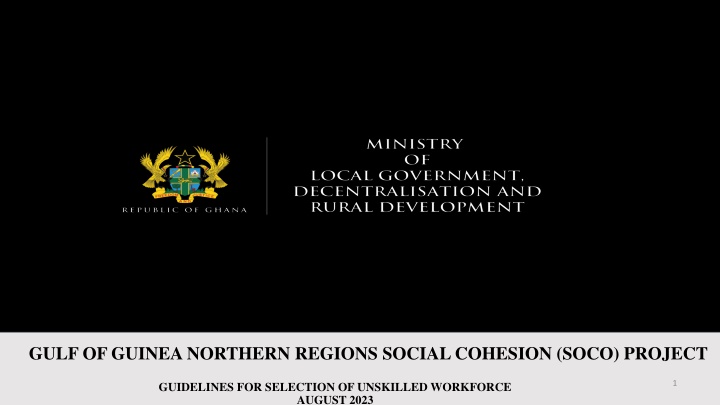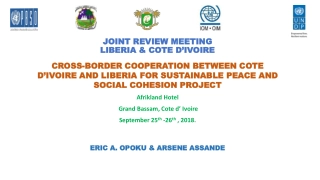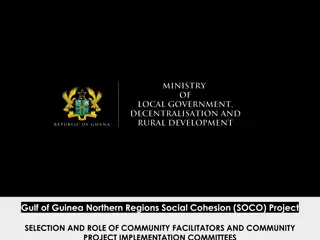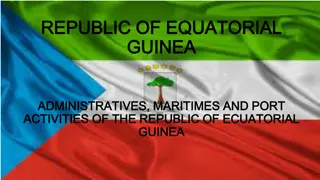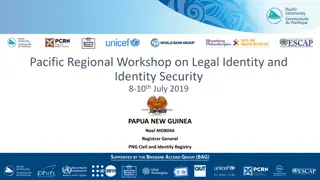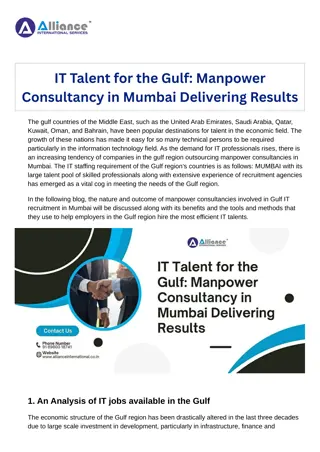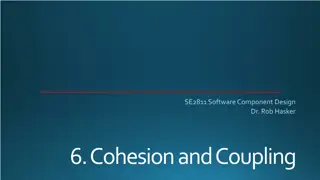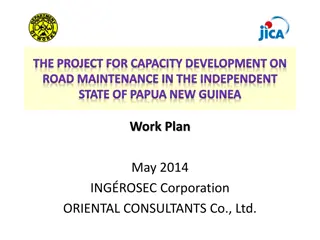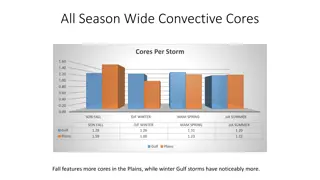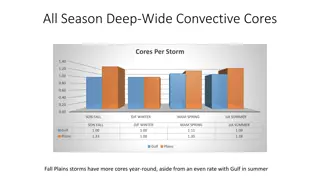Guidelines for Selection of Unskilled Workforce in Gulf of Guinea Northern Regions Social Cohesion Project
This draft trainer's manual outlines the purpose and structure of the manual designed for providing capacity building training to community structures involved in the Gulf of Guinea Northern Regions Social Cohesion (SOCO) Project. The manual aims to enhance the effectiveness of community-level training activities by offering guidance on training content, methodologies, and principles essential for strengthening the targeted community groups. It is structured into introductory sections focusing on adult learning concepts and detailed modules covering core training topics. The manual serves as a valuable resource for trainers engaging with various community structures to improve their functionality through training and logistical support.
Download Presentation

Please find below an Image/Link to download the presentation.
The content on the website is provided AS IS for your information and personal use only. It may not be sold, licensed, or shared on other websites without obtaining consent from the author.If you encounter any issues during the download, it is possible that the publisher has removed the file from their server.
You are allowed to download the files provided on this website for personal or commercial use, subject to the condition that they are used lawfully. All files are the property of their respective owners.
The content on the website is provided AS IS for your information and personal use only. It may not be sold, licensed, or shared on other websites without obtaining consent from the author.
E N D
Presentation Transcript
GULF OF GUINEA NORTHERN REGIONS SOCIAL COHESION (SOCO) PROJECT 1 GUIDELINES FOR SELECTION OF UNSKILLED WORKFORCE AUGUST 2023
OUTLINE Introduction and objectives of the presentation Purpose of the manual Structure of the manual Methods of delivering modules Content of the Manual Conclusion
INTRODUCTION AND OBJECTIVES OF THE PRESENTATION The following session presents an overview of the Draft Trainer's Manual. The objective is to take you through relevant portions very critical for effective delivery of the community level trainings. The Manual will be shared with you
PURPOSE OF THE MANUAL The project will rely on community structures for delivery of infrastructure and soft activities, at the subdistrict level. Some these structures are Community Facilitators, Community Project Implementation Committees, Facility Management Committees,Urban Zonal Town and Area Councils, Unit Committees, Community Based Organisations (CBOs), Assembly Members,Opinion Leaders and other community groups/associations
PURPOSE OF THE MANUAL The manual is therefore intended to provide guidance to trainers who will be providing capacity building to the aforementioned structures . These structures need to strengthened through training and provision of logistics to enable them function effectively. The manual covers training content, methodologies and principles that trainees will need during community level training activities.
STRUCTURE OF THE MANUAL The manual in its current form has two major sections. The first part covers the introductory sections and presents concepts, methods, and principles in the field of adult learning which a trainer needs to be aware of to be able to manage the learning process effectively. The second part presents the modules that deal in detail with the core topics that training intends to impart to the trainees.
STRUCTURE OF THE MANUAL Each topic is covered in a module or with sub-modules described as session . A module has a brief introduction, time allotted, objectives, expected outputs, teaching- learning materials, method of delivering the module and learning activities. A facilitator s notes handout are included in the module to give details content to both trainer and trainees. and participant
METHODS OF DELIVERING MODULES There are several methods that trainers may adopt in delivering each module. Let's discuss the following: Brain storming: The use of this method is generally made as a first step to generate initial interest and essential involvement of the trainees in the training activity. For this, the trainer asks the trainees to think of any ideas without evaluation or judgement.The quantity, not the quality, is what matters. Ideas can be discussed later for practical consideration. Sometimes unwanted or seemingly ridiculous ideas lead to a more practical idea, which would otherwise not have been considered.
METHODS OF DELIVERING MODULES Interactive lecture: This method is marked by encouraging the trainees to be quite active and analytical in their learning approach. They are also motivated to be inquisitive and anxious to know new things by asking questions and exploring alternatives.
METHODS OF DELIVERING MODULES Illustrative Talk: This is a lecture method supplemented by the use of proper illustration using training materials, including audio-visual aids. Presentation of success stories and case studies is also one of the essential elements of this method.
METHODS OF DELIVERING MODULES Group Discussion: Use of this method is based on the principle of the trainer taking on the role of a group promoter. This method is also an effective instrument of participatory learning, whereby the trainer acts as a group adviser, a group facilitator and a group torch bearer. Panel Discussion: The use of this method is marked by greater involvement promoting participatory learning. In this situation the trainer s role is limited to be that of coordinator and moderator of the discussion, in which the trainees as panellists act as catalyst agents of the learning process of trainees in
METHOD OF DELIVERING MODULES Role play: This is one of the most effective training methods of participatory learning, in which the trainees are provided an opportunity to put into action the skills learnt through the training. For this, an artificial situation is created, whereby every individual trainee is assigned a role which he/she enacts to demonstrate the skills learnt through the process of training. In ToT these assigned roles may be such as the trainer, the trainee, the operator of audio-visual equipment, etc. While using this method, the role of the facilitator of training is that of a guide or director of the enacted play.
CONTENT OF THE MANUAL Some of the topics discussed in the Manual cover the following: Module 1: Introductory Activities and Overview of The SOCO Project Session 1: Introductory Activities and Ice Breakers Session 2: Overview of The SOCO Project Module 2: Team Building, Group Dynamics and Decision Making Session 1: Team Building and Group Dynamics Session 2: Participatory Decision-Making Process Session 3: Inclusion of Women and Other Vulnerable Groups Module 3: Defining and Identifying Community Problems and Needs Session 1: Problem Identification Session 2: Analysing Community Problems and Needs Session 3: Prioritisation of Community Needs Module 4: Preparation of Development Plans Session 1: Preparation of Community Action Plans Session 2: Preparation of Area/Cluster Plans
CONTENT OF THE MANUAL Module 5: Information, Education and Communication (IEC) Module 6: Project Implementation and Management Module 7: Participatory Monitoring Module 8: Safeguards Adherence
CONTENT OF THE MANUAL The trainer's Manual is a DRAFT and will be tested during year 1 operations. Trainers and trainees are therefore encouraged to take field notes and incorporate lessons learnt when the review processes are initiated later in the year.
THANK YOU
